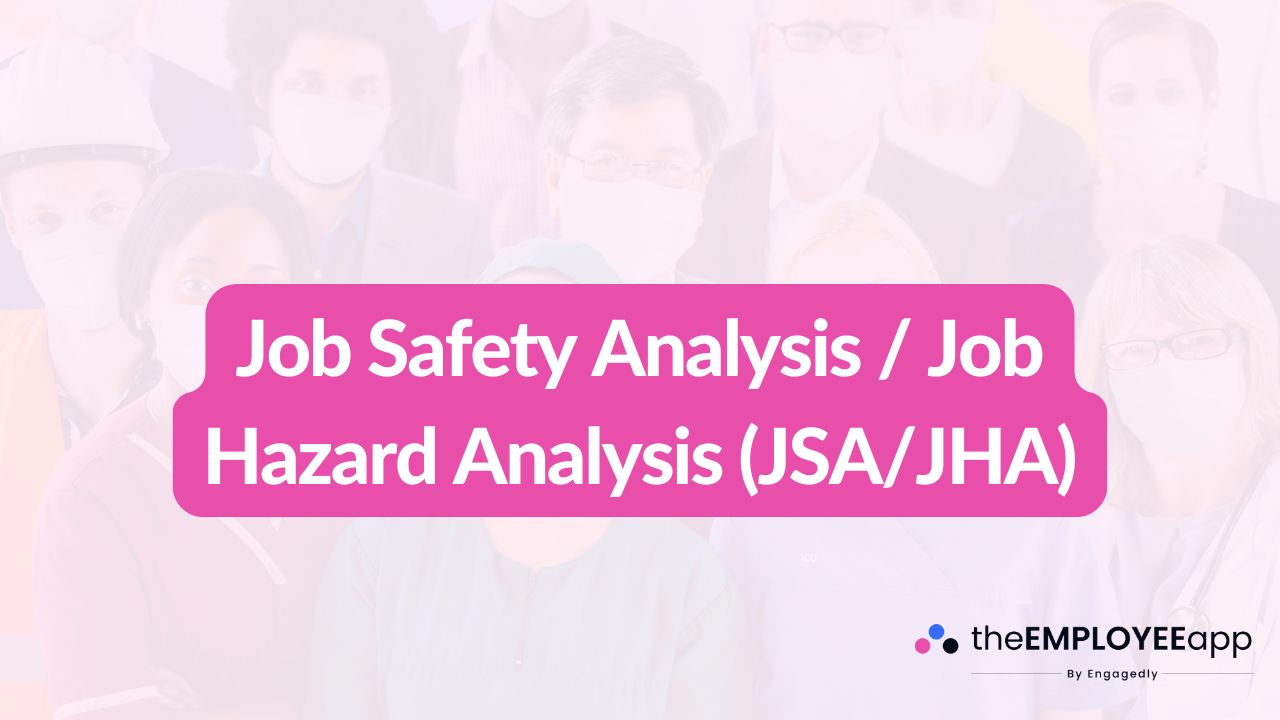
A Job Safety Analysis (JSA), also known as a Job Hazard Analysis (JHA), is a structured process used to identify potential hazards associated with specific job tasks and develop strategies to minimize or eliminate risks. The goal is to break down a job into individual steps, analyze each step for hazards, and determine preventive measures to keep workers safe.
This method is one of the most widely used tools in workplace safety because it bridges the gap between job design, employee training, and hazard prevention. By proactively addressing risks, organizations not only reduce injuries but also increase productivity and confidence among employees.
Workplace tasks often involve multiple steps, equipment, and environmental conditions. Without proper planning, these can lead to unsafe practices or unexpected hazards. A JSA or JHA is valuable because it:
Identifies hidden risks before an incident occurs.
Provides a step-by-step guide for employees on safe job performance.
Helps organizations comply with occupational safety regulations.
Serves as a foundation for training programs.
Builds a culture of safety by involving employees in hazard recognition.
When conducted effectively, JSA/JHA not only reduces accidents but also improves efficiency, as workers know exactly how to perform tasks safely and correctly.
A well-structured JSA or JHA typically includes:
Job Selection: Choosing high-risk or frequently performed jobs for analysis.
Task Breakdown: Listing out every step required to complete the job.
Hazard Identification: Examining each step to identify potential dangers such as falls, exposure to chemicals, equipment malfunctions, or repetitive strain.
Risk Controls: Determining preventive measures such as personal protective equipment (PPE), engineering controls, or changes in work procedures.
Documentation: Recording findings and making them available to employees for training and daily use.
Review and Update: Regularly revisiting the analysis to ensure it remains relevant as tasks, tools, or environments change.
Select the Job to Analyze: Start with jobs that have the highest injury rates, involve new employees, or require specialized equipment.
Break the Job into Steps: Clearly outline how the job is performed from beginning to end, keeping steps manageable but detailed.
Identify Hazards: For each step, ask questions like: What can go wrong? What could cause injury? What conditions increase risk?
Develop Preventive Measures: Use the hierarchy of controls—elimination, substitution, engineering controls, administrative controls, and PPE—to reduce risks.
Implement and Train: Share the findings with employees and integrate safety measures into training programs.
Review Regularly: Jobs and environments evolve, so analyses must be updated to remain effective.
The value of JSA and JHA goes beyond compliance. Organizations that commit to this practice benefit from:
Reduced Workplace Injuries: Systematic hazard recognition leads to fewer accidents.
Cost Savings: Fewer incidents mean reduced medical expenses, downtime, and insurance claims.
Employee Empowerment: Workers engaged in the process feel more responsible for their own safety.
Improved Communication: The process fosters dialogue between supervisors and frontline workers.
Consistency in Work Practices: Clear safety guidelines standardize how tasks are performed across teams.
Some organizations face barriers when implementing JSA/JHA, such as time constraints, lack of employee participation, or limited resources. To address these issues:
Make the process collaborative by involving frontline employees.
Keep analyses clear and practical, avoiding overly complex documents.
Use digital tools to streamline data collection and updates.
Integrate JSA/JHA into daily operations rather than treating it as a one-time exercise.
Ultimately, Job Safety Analysis and Job Hazard Analysis are not just compliance checkboxes—they are essential tools for building a proactive safety culture. By breaking down tasks, anticipating risks, and creating practical safety measures, organizations can protect workers and strengthen operational resilience.
When employees see that their feedback is valued and their safety is prioritized, they are more likely to engage in safe practices and contribute to ongoing improvements.
Job Safety Analysis (JSA) and Job Hazard Analysis (JHA) are foundational safety tools that help organizations recognize hazards, prevent incidents, and protect employees. Through systematic evaluation of job tasks, hazard identification, and preventive action, these processes create safer, more efficient workplaces. Regularly updating and reinforcing JSA/JHA ensures that safety remains aligned with evolving job demands and industry standards.
